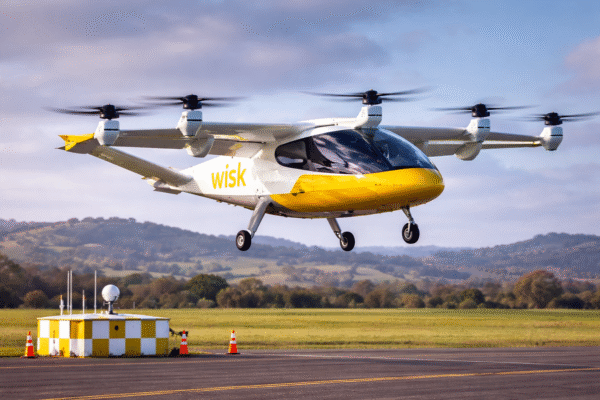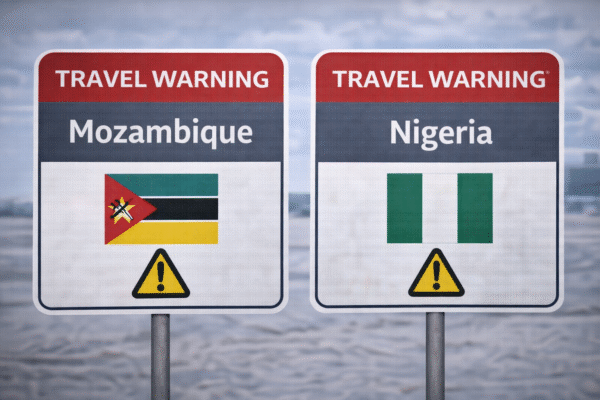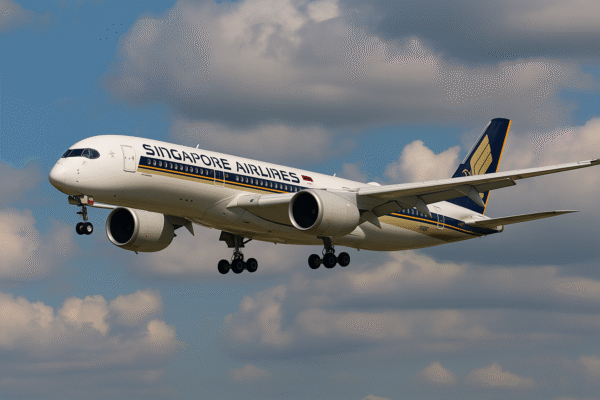Singapore Airlines A350 Incident Over Shanghai Prompts International Aviation Safety Review
A Singapore Airlines Airbus A350-900 flying from Singapore to Shanghai on June 27, 2025, encountered severe turbulence during its descent, resulting in injury to a passenger and renewed global scrutiny of inflight safety standards. Flight SQ832, en route to Shanghai Pudong International Airport, experienced violent atmospheric disturbance at 27,000 feet, leading to a brief but intense cabin disruption before landing safely. The incident adds to growing international concern over turbulence-related emergencies amid increasingly unpredictable weather patterns.
The aircraft, registered 9V-SMB, has been a flagship of Singapore Airlines’ long-haul fleet since its delivery in 2016. Known for advanced aerodynamic design and fuel efficiency, the Airbus A350-900 nonetheless fell victim to turbulent conditions that are becoming more common due to global climate shifts. Upon touchdown, emergency crews at Shanghai Pudong provided immediate medical attention to the injured passenger, who required hospitalization for evaluation. No additional injuries were reported.
Singapore Launches Investigation as Safety Measures Intensify
The Air Accident Investigation Bureau of Singapore (AAIB) swiftly categorized the occurrence as an aviation accident, triggering a formal probe into the causes of the midair event. Investigators will examine flight data, weather reports, and cockpit communications to assess the severity and response procedures. While turbulence is a known risk during descent phases, the violent nature of this incident has spotlighted broader safety concerns affecting multiple regions.
This incident reignites global memories of previous Singapore Airlines turbulence cases, particularly the fatal May 2023 episode involving a Boeing 777-300ER that plunged rapidly over Myanmar airspace. That event caused one death and more than 30 injuries and led to emergency diversion to Bangkok. It also catalyzed airline-wide reforms in inflight safety procedures.
Past Events, Global Connections: UK, Australia, Myanmar, and New Zealand
The June 2025 turbulence incident carries echoes of past passenger trauma worldwide. A United Kingdom citizen lost their life in the 2023 turbulence event, which later led to compensation disputes and legal reforms in Australia. In New Zealand, a passenger from that flight remains in recovery from lasting psychological injury, highlighting how turbulence can leave cross-border consequences—medical, legal, and emotional.
Myanmar’s airspace, where the earlier turbulence disaster occurred, remains classified as hazardous by aviation monitoring authorities such as the U.S. FAA and the UK Civil Aviation Authority. The June 27 turbulence over China further emphasizes the transnational nature of air safety concerns in high-risk zones.
Airline Safety Reforms and Updated Cabin Protocols
Following the 2023 incident, Singapore Airlines revised its cabin service protocols to reduce injury risk. Hot meal service is now suspended whenever the seatbelt sign is illuminated, and cabin crew are instructed to remain seated with belts fastened during periods of anticipated instability. These reforms are part of a broader trend among international carriers to adapt to heightened atmospheric risks.
Singapore Airlines is also investing in enhanced weather tracking technologies and real-time turbulence detection tools as part of its strategic review of safety procedures. The airline remains in active collaboration with aircraft manufacturers and aviation regulators to adopt cutting-edge inflight safety solutions.
Legal Ramifications and Montreal Convention Compliance
Legal implications continue to emerge from turbulence-related accidents, especially as airlines must comply with international treaties like the Montreal Convention, which mandates compensation for injuries or deaths sustained during flight. In the aftermath of the 2023 event, Singapore Airlines extended offers between US$10,000 and US$25,000 based on injury severity. However, psychological trauma without physical injury remains a grey area in legal compensation frameworks.
Several law firms in Australia and New Zealand are currently representing passengers seeking damages beyond standard offers, particularly those suffering from long-term post-traumatic stress disorder (PTSD). Legal outcomes from these cases may set precedents affecting future claims worldwide.
Climate Change and the Rise of Clear-Air Turbulence
The June 2025 incident adds to mounting scientific evidence of increasing turbulence linked to climate change. According to a 2023 study published by the University of Reading in the UK, clear-air turbulence has increased significantly over the North Atlantic and Asia-Pacific regions due to stronger wind shear patterns at cruising altitudes. These changes—unseen by radar and often undetectable until impact—pose rising threats to flight safety.
The International Air Transport Association (IATA) and other global aviation bodies are urging airlines to enhance pilot training, invest in advanced sensors, and implement new flight route algorithms that prioritize turbulence avoidance. As flights resume post-pandemic and air traffic intensifies, preparedness for inflight volatility is essential.
Safe Landing, Continued Vigilance
Despite the jarring experience, flight SQ832’s safe landing at Shanghai Pudong International Airport underscored the effectiveness of pilot response and crew coordination. Singapore Airlines commended the professionalism of the cockpit team and confirmed that the injured passenger is receiving full support.
As investigations continue, the incident serves as a stark reminder of the evolving challenges modern aviation faces. From regulatory policy to passenger awareness, the industry is confronting new realities shaped by climate volatility, international law, and the rising expectations of global travelers.
For passengers worldwide—whether flying across the Pacific, over Southeast Asia, or into Europe—the turbulence faced by SQ832 is a powerful call to remain alert, buckle up, and recognize that air safety is no longer only about technology but about resilience in a fast-changing sky.
For more travel news like this, keep reading Global Travel Wire



















